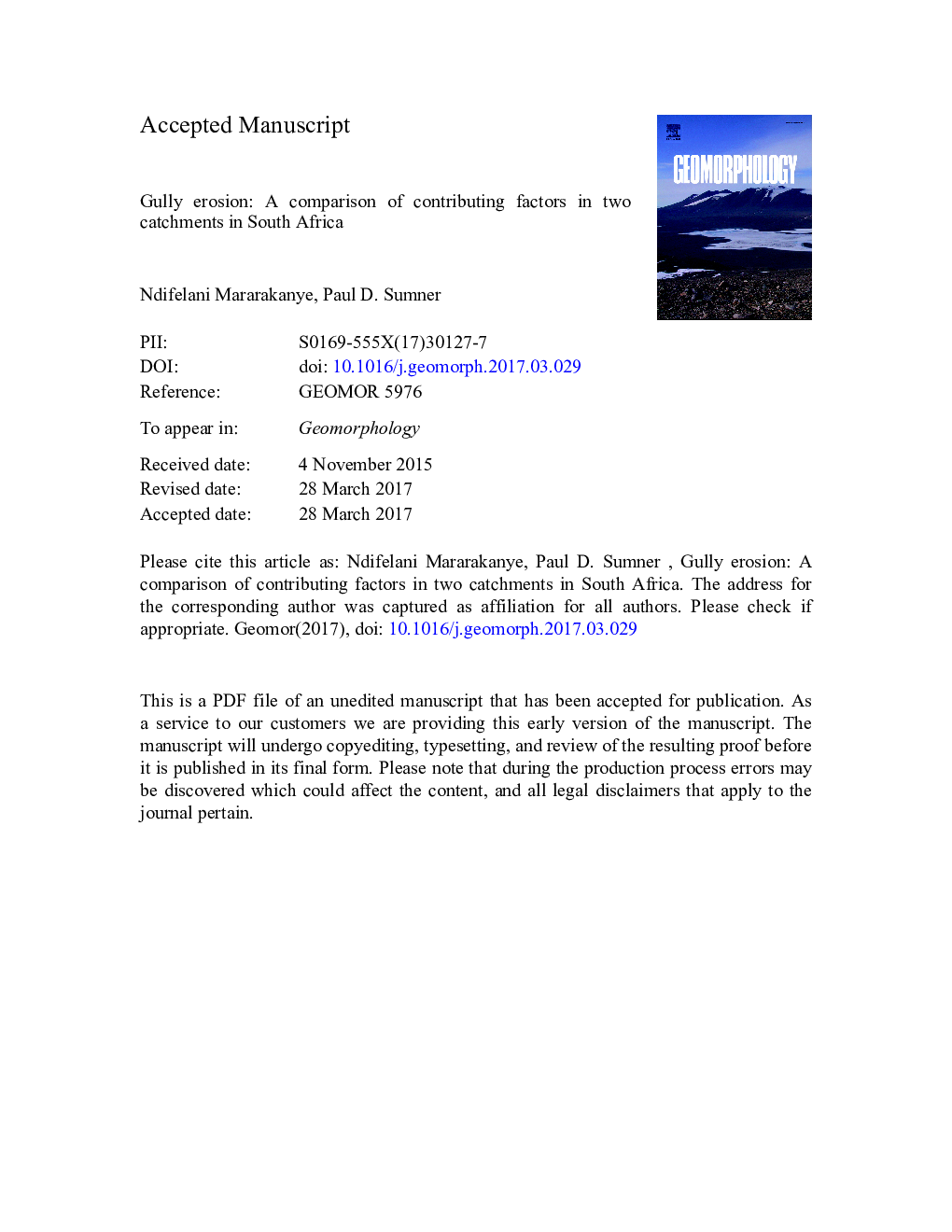| Article ID | Journal | Published Year | Pages | File Type |
|---|---|---|---|---|
| 5781003 | Geomorphology | 2017 | 38 Pages |
Abstract
Gully erosion is an environmental, agricultural and social problem requiring extensive research and mitigation actions to control. This study assesses the influence of factors contributing to gully erosion using Geographic Information System (GIS) and Information Value (InfVal) statistics from two catchments coded X12 and W55 in the Mpumalanga province of South Africa. Existing spatial data representing contributing factors; soil, geology, vegetation and land use were analyzed. Topographic variables were extracted from a 10Â m Digital Elevation Model (DEM) interpolated from map contours, and gullies were mapped from aerial photos with 0.5Â m spatial resolution. A zonal approach was used to extract the proportion of gullies in each of the contributing factor classes using GIS software packages, and InfVal weighting was performed to determine the influence of each class. Comparison of the results shows the variation in the level of influence of factors contributing to gully erosion. The findings in catchment X12 support a commonly held assumption that gully formation is influenced by duplex soils underlain by colluvium and alluvial deposits on a lower slope position where overland flow converges and accumulates, resulting in high soil moisture. Gullies were also influenced by soils developed over weathered granite, gneiss and ultramafic rocks. The influence of a granite rock was further highlighted in catchment W55 where there is a variable thickness of very deep Hutton dominant soil form and shallow Lithosols with sandy texture, on an area of moderate to steep slopes where overland flow converges and accumulates, with high stream power in overgrazed grassland. An understanding of these factors will assist future modelling of the vulnerability to gully erosion over a wider geographical area.
Related Topics
Physical Sciences and Engineering
Earth and Planetary Sciences
Earth-Surface Processes
Authors
Ndifelani Mararakanye, Paul D. Sumner,
